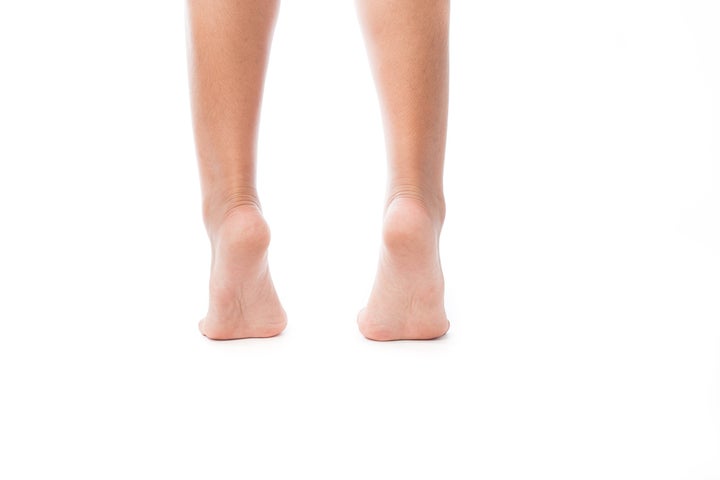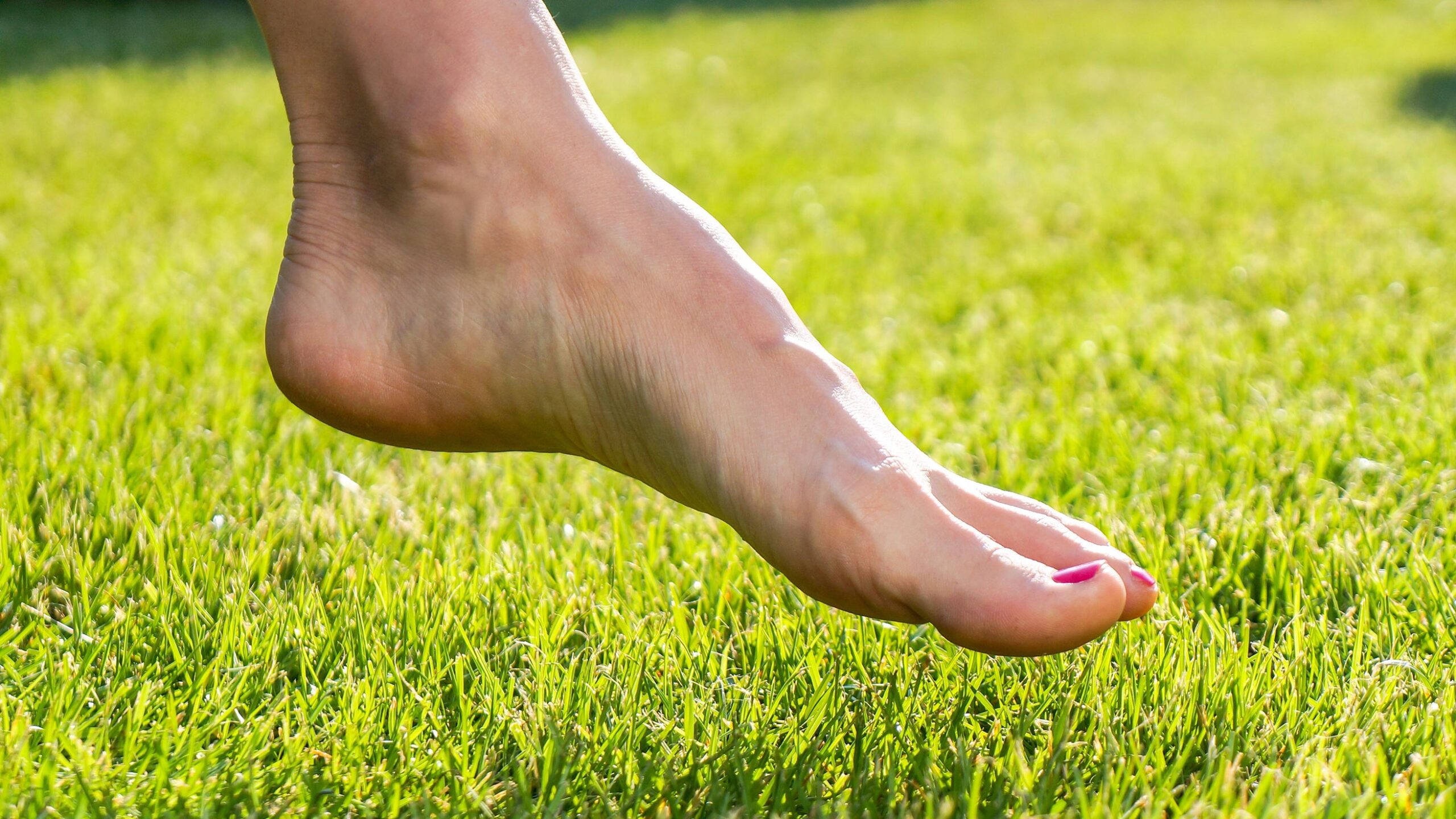All runners, regardless of ability or history of foot problems, will benefit from stronger, more competent feet—particularly the big toe, or hallux. Hallux mobility and stability are critical to how the foot absorbs shock, stabilizes the stride, stores energy, and pushes off.
Without adequate foot mobility and strength, any number of problems may arise, including pain in the ankles, shins, knees, hips, and lower-back. When foot problems arise, we tend to rely on inserts, special shoes, tape, and other external aids to solve our problems. There’s a better way: Mobilize the feet and make them strong and engaged, starting with the big toe.
Stability
About 80-85% of foot stability in running comes from the big toe, according to physical therapist and running coach Jay Dicharry. The hallux must help stabilize the foot and control the arch during footstrike so impact forces are distributed evenly. The hips and legs rely on that stability to transmit energy efficiently into the ground during push-off.
The muscle in your arch that attaches to the big toe (flexor hallucis brevis or FHB) is the main stabilizer muscle of the hallux during this process. Failure to stabilize the foot through the hallux means impact and propulsion forces must go somewhere else, probably through tissues that aren’t meant to tolerate those forces. If nothing else, a weak FHB and unstable hallux make you slow.
Stability Solutions
These toe drills require skill and they may be quite challenging at first. That’s because your brain and your toes haven’t spoken clearly to each other for a while.
Take your time. Spend 10 minutes a couple of times a day and you’ll improve quickly. The exercises progress from isolation of the feet and toes to the integration of the feet and toes with the glutes and abs.
Toe Yoga
Progress from standing on two legs to standing on one.
Ankle Rolls
Progress from standing on two legs to standing on one.
Block Heel Raise
Tilt Board
Single-leg Tube Rotation
These exercises are adapted from work by Jay Dicharry.
Mobility
Efficient, healthy gait relies on the big toe to extend (bend upward) about 50–90 degrees as the body passes over the foot. This allows the leg to extend behind the body and activates the windlass mechanism in which the hallux pulls on the plantar fascia, creating tension. This tension raises the arch, stiffens the foot, and enables a strong push-off as the foot becomes a rigid lever and the plantar fascia transmits energy into the ground.
If the hallux can’t bend sufficiently then problematic compensations occur. A rigid hallux may cause a collapse inside of the foot, knee, and hip, causing a knock-knee/duck-footed gait. Or, the body may shift weight outside causing a bowlegged gait and a high, rigid arch that can’t absorb shock. The consequences of either compensation pattern may be plantar fasciitis, Achilles tendinopathy, shin splints, calf or hamstring strains, knee pain, hip pain, low-back pain—possibly even neck and shoulder pain.
Mobility Drills
Mobilize the hallux with the drills listed below. Do them at least daily.
Manual Mobilization
Toe Roll-up
Toe Reaches
Toe Walks
This is simple. Stand up on your tippy-toes and walk forward, backward, and sideways. This exercise works the toes, arches, and calves. You may add weight by holding dumbbells, wearing a weight vest, or putting a bar on your back.

Shoes
Narrow, pointed shoes may constrain the toes and contribute to hallux limitus (stiff big toe) and hallux valgus (bunions.) Try a shoe with a roomier toe box—a change in footwear may help a lot. A toe-spreading device like CorrectToes may help realign your big toe into an effective position once you give it adequate room.
When to Stop
Stop if you have pain doing the drills and seek help from a physical therapist, podiatrist, or chiropractor. A condition like structural hallux limitus (stiff big toe)may hurt more as you try to mobilize the hallux. Runners with hallux limitus may do better with a stiffer-soled, rocker shoe that doesn’t allow much hallux dorsiflexion. Hallux valgus (bunions) may need medical treatment as well.


